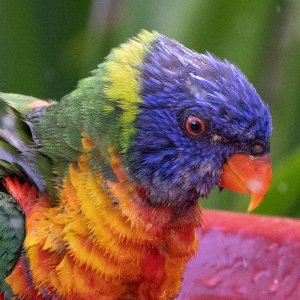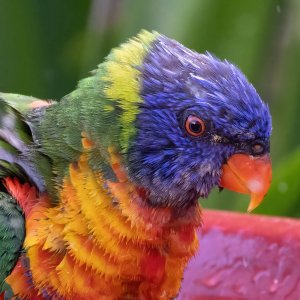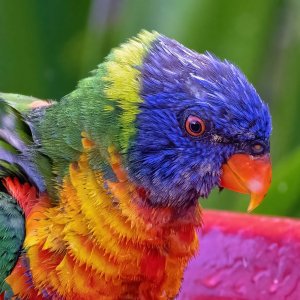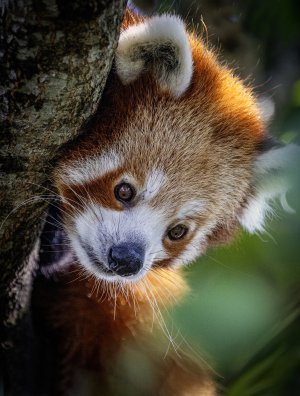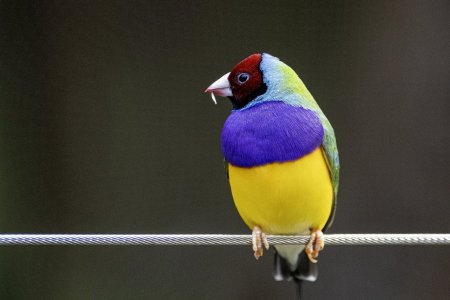I like my R6ii and 100-500 but also like it with the R7 it becomes a 160-800, basically the 200-800 on a FF but a lot less weight.
I am first on the list at Hunts Providence RI but still agonizing about it. The R6ii ISO performance blows away the R7 but the R7 the 200-800 becomes a 320-1280, that is great on big water for birds.
What I have been doing is the R6ii on the RF 100-400 and the R7 on the 100-500 w/ 1.4x i.e. 672-1120 (300-500 w 1.4x) if the 100-500 had the full range with the extender it would be a no brainer....
I may be sticking my neck out here, but
on a totally personal basis, I was utterly disappointed in the R7. I had the 7D and 7DII, and hoped for a camera of the same ilk as a flagship APS-C camera. IMHO, it was built to a price and has serious flaws both in terms of its technical design and the marketing of it (not the first time, thinking of the R5 video marketing). Canon pulled back on the analogy with the 7DII and instead said it was a replacement for the 90D, and maybe it was, but I didn't like that much either.
The physical build was not as robust as the 7D series, and it did not take a battery grip, which is
really helpful for long lenses, both to balance the weight of the optic , but more for the duplicate portrait controls. Turning the camera 90 deg to portrait is no great issue with a smaller, lighter lens, but with a big, heavy lens, it's not ergonomically great.
Like the 90D, the R7 crammed 32MP into an APS-C creating a massive pixel density, in fact it is the equivalent of running a FF sensor at 83MP, which
no maker has attempted. So, it will be at risk from noise in low light, high ISO condition.
Then we come to the data bus. One of the major points touted for the R7 was its fast frame rate or 30fps, however that was with a full electronic shutter. Pushing that much data through from sensor to card requires very fast read speeds, a fast processor and a big buffer. The issue is that the R7 has none of these. The electronic shutter requires the sensor to refresh to capture the image
at speed. However, unlike the 23MP R3, Its sensor is
not stack or BSI, so its read speed is slow, and that results in
significant rolling shutter, so if one is panning to follow a subject the background verticals will be bent over. Not a good look, IMHO.
Once the data is captured by the shutter it goes to the processor, but it has only one and it's not the latest so that is another bottle neck. Then we come to the buffer which is not large enough - if you are shooing in RAW, you get 1.2 sec of shooting before the buffer fills up! That is not impressive, and part of the reason is because it uses SD cards that don't download data fast enough for the amount coming to them, thus depending on the buffer even more to hold the line.
The alternative is to use mechanical shutter at 11fps, but it is really,
really noise and can suffer from mechanical vibration. That is more of an issue with wildlife, but it does sound like a tinker's cart.
Finally, we come to focusing. Being a mirrorless system, it focuses using the sensor, and with that many focus points, it has issues with the processor so that it can pulse as it keeps trying to find focus faster than the processor can handle it, so it will focus, miss focus, focus miss focus. It used a cut-down version of the FF systems and has a tendency to pulse - and this is well documented on the Canon community site where I do support work.
For that reason, I went for the R5 (corrected from R7), which offers a FF sensor of 45MP, brilliant tracking (which has improved over several firmware updates) and allows me to go into 1.3 or 1.6 crop modes to get the FoV boost for telephoto work. Even at 1.6 crop mode, where the pixel count is reduced by a factor of 2.56, it still renders images of 17.5MP, which for
me, is more than enough. Much depends in what media one is going to produce a final product. It takes different gear for a very large, detailed Fine Art print for sale, compared to social media, digital displays, or modest prints.
Again, I emphasize that this is my personal perspective, but I hope you can see the basis of my logic.
